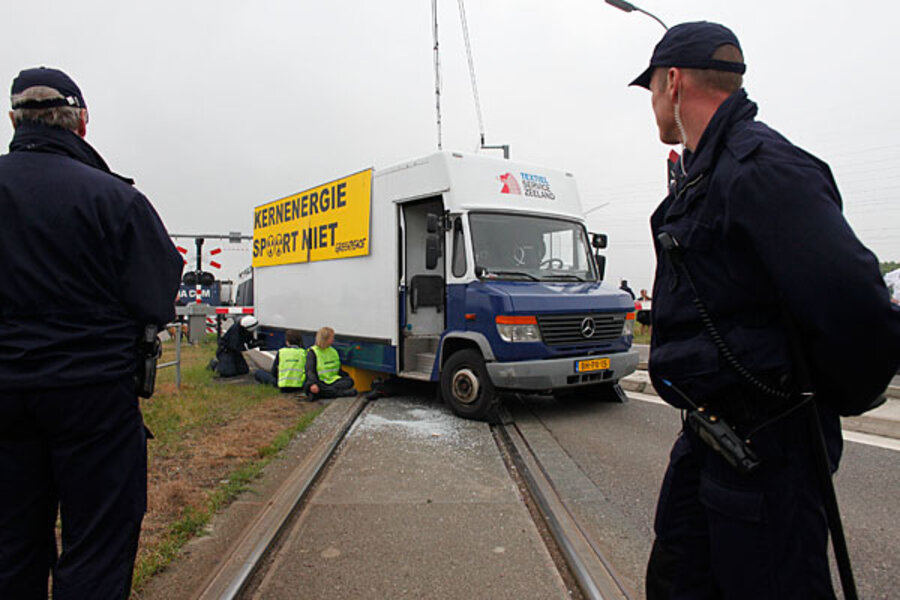Can Europe find a safe place for nuclear waste?
Loading...
| Berlin
The European Union has given member states four years to come up with plans to permanently store their nuclear waste, a problem that continues to vex all nuclear energy-producing nations.
Energy ministers in Brussels adopted the plan yesterday. While it was greeted with enthusiasm by some officials, some European lawmakers said the directive was overly vague and lacked specific targets.
"After years of inaction, the EU for the very first time commits itself to a final disposal of nuclear waste,” said EU energy commissioner Günther Oettinger. “The EU becomes the most advanced region for the safe management of radioactive waste and spent fuel.”
One hundred and forty-three reactors in the EU produce 7,000 cubic meters of highly radioactive waste every year. No country in the union, in fact no country anywhere in the world, has facilities to store this waste permanently and safely – more than 50 years after the first nuclear power plants were switched on.
“Governments have been passing the problem on for decades now – to the next administration, the next generation,” said Mr. Oettinger.
Critics don’t fail to notice the irony: Before going to Brussels, Oettinger was prime minister in the German state of Baden-Württemberg, home to four nuclear power plants. He did not stand out for attempts to find a solution to the waste problem.
The directive obliges member states to present timelines for the construction of disposal facilities, and to identify sites where legally binding safety standards can be implemented.
Currently, it takes 40 years to develop and build a so-called deep geological repository. EU countries can team up to create common facilities; the export of waste to non-EU states is allowed only if the destination country operates a suitable repository. Exports to African, Pacific, and Caribbean countries and to Antarctica are ruled out.
Environmental campaigners criticize the directive for not being clear enough.
“Lots of recommendations, but in the end, member states can decide themselves on the implementation,” says Rebecca Harms, leader of the Green party in the European Parliament. “The commission doesn’t even give a clear definition what constitutes nuclear waste. What we’ll see in the end is going to be not the safest but the cheapest solution.”
One requirement in the directive could prove to be the most problematic one: the general public should be given the opportunity to participate effectively in the decisionmaking process.
“It’s been the same story all over Europe,” says Gerhard Schmidt of the Institute for Applied Ecology in Darmstadt, which advises the German government on nuclear safety issues. “Nuclear industry and government are secretly looking for disposal sites, but as soon as the public gets wind of the plans, they are withdrawn. It’s political poison.”
Problems similar to those in Europe have hampered the search for nuclear-waste repositories elsewhere. In the US, lawmakers continue to struggle over the Yucca Mountain repository, a project the Obama administration has decided to shut down after decades of political wrangling and scientific doubts over its suitability.
A transparent procedure could help in finding adequate sites, says Mr. Schmidt, adding that the research into safe nuclear-waste management has made huge progress. “Scientifically, we are almost there. But we haven’t been able to create public acceptance, with the exception of Sweden and Finland, maybe.”





